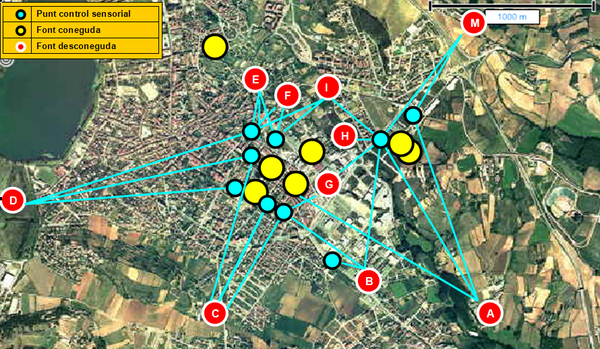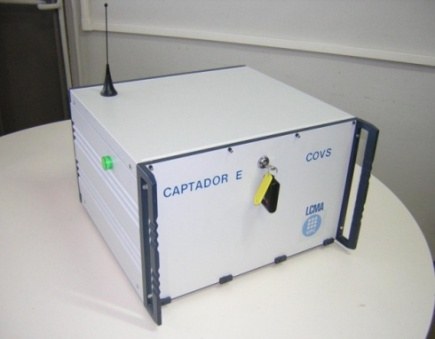Odour episodes control in urban areas
Odour episodes evaluation has two main key points: first, determine if negative health effects can also be associated with the odorous nuisance, and second, determine the odorous origin in order to start a minimizing process. Hence, the concrete identification of potentially odorous compounds is needed. In this line, LCMA has developed several equipment and methodologies focused in the sampling and analysis of these compounds. The designed device (ES 2 311 396 B1, 2006 patent) allows a high quality dynamic sampling (inert material, 10 calibration flow levels, high flow stability, sequences programming and remote activation through radio frequency or mobile phone). The applications of the above mentioned methodology in real scenarios have been the following:
- Sampling of odorous episodes through social control (activation and deactivation of the samplers by the affected people or by technicians or municipal police) in established points or in mobile sources (vehicles)
- Evaluation of immission levels in urban areas. Generation of concentration and odour maps
- Sampling of odorous episodes and determination of air quality indoors (evaluation of deficiencies in ventilation systems design, evaluation of impacts from external sources in sick building syndrome situations, …)
Figure 1. LCMA double channel sampler |
The sampling equipment is complemented with the development and validation of multi-sorbent bed tubes and their chemical analysis through thermal desorption coupled to gas chromatography mass spectrometry (TD-GC/MS) to determine and evaluate a wide range of volatile organic compounds.
The origin of odorous episodes is determined through data from both social (odour registries) and chemical control, together with the calculation of episode roses (trajectories) and the back-trajectories determined using numerical modelling.
The determined trajectories from the detection points of the odorous episodes based on meteorological conditions indicate us in a first approach the potential emission sources (Figure 2).
 |
 |
|
Figure 2. Detection of the odour sources using meteorological analysis and social participation. |
Figure 3. Odour map resulting from chemical control |
An odour map (odour units/m3) is presented in figure 3. Odour maps are determined dividing the obtained VOC concentrations from chemical control by the odour threshold of each VOC. With these maps the emission origins of the odorous episodes can generally be observed. In the present case corresponds to a food industry facility.
The evolution of the back-trajectory of an air mass from the point of detection of an odorous episode can be observed in figure 4. The back-trajectory determines the origin of the episode in a municipal solid waste treatment facility.
origin of odorous episodes |



Share: